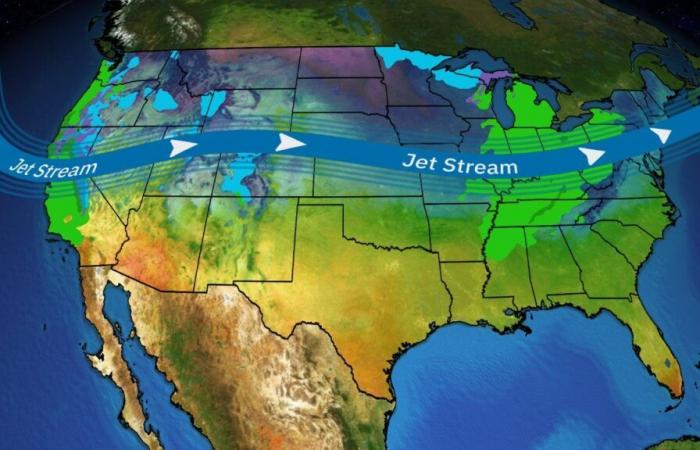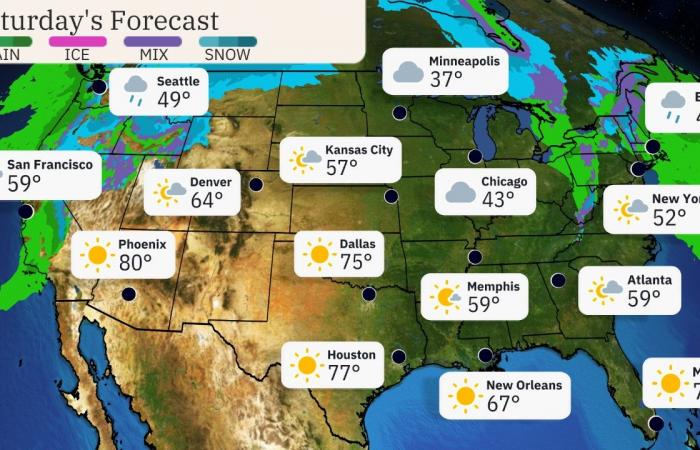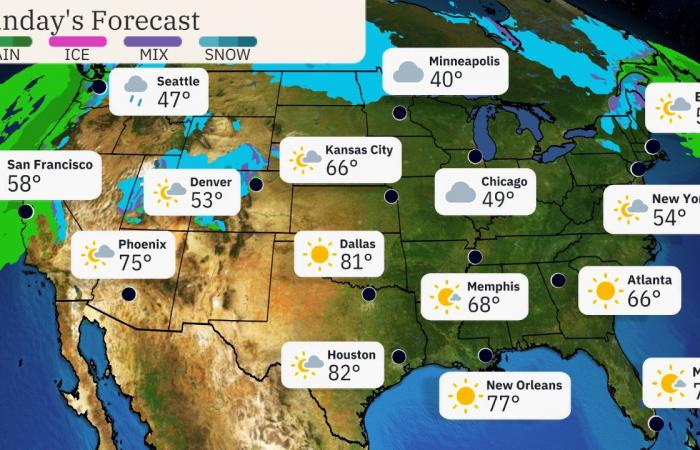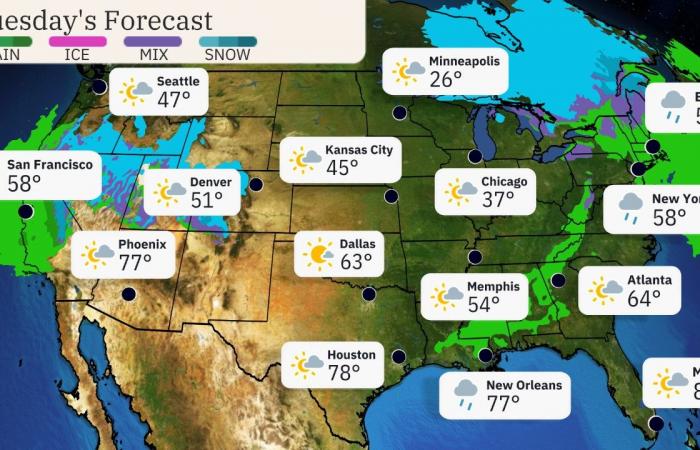Play
- Rain and higher-elevation snow is likely this weekend in the West and Northeast, while most others stay dry.
- Gusty winds might cause some airport delays in the Northeast this weekend.
- Next week’s forecast is still uncertain, but pre-holiday travel might feature some unsettled weather in parts of the West and East.
AAA estimates nearly 80 million will travel for Thanksgiving this year and for some, weather could interrupt some of those plans.
Here’s a look at the forecast for those hitting the roads and taking to the skies this weekend followed by an early glimpse at a still uncertain forecast for pre-Thanksgiving travel next week.
(MORE: Guide To Surviving Thanksgiving Travel)
This Weekend
Much of the country will be dry, but the West Coast and the Northeast could have some rainy, snowy and windy trouble spots.
Rain showers are possible from California to the Pacific Northwest, with rain and mountain snow extending eastward into the Rockies.
In the Northeast, a lingering low-pressure system will produce scattered areas of rain and high-elevation snowflakes, mainly across interior areas and New England on Saturday. That low will also instigate gusty winds in the region, which might result in some airport delays.
Possible airport hub delays: San Francisco, mainly Sunday (rain, low clouds); Northeast megalopolis airports, especially Saturday (gusty winds)
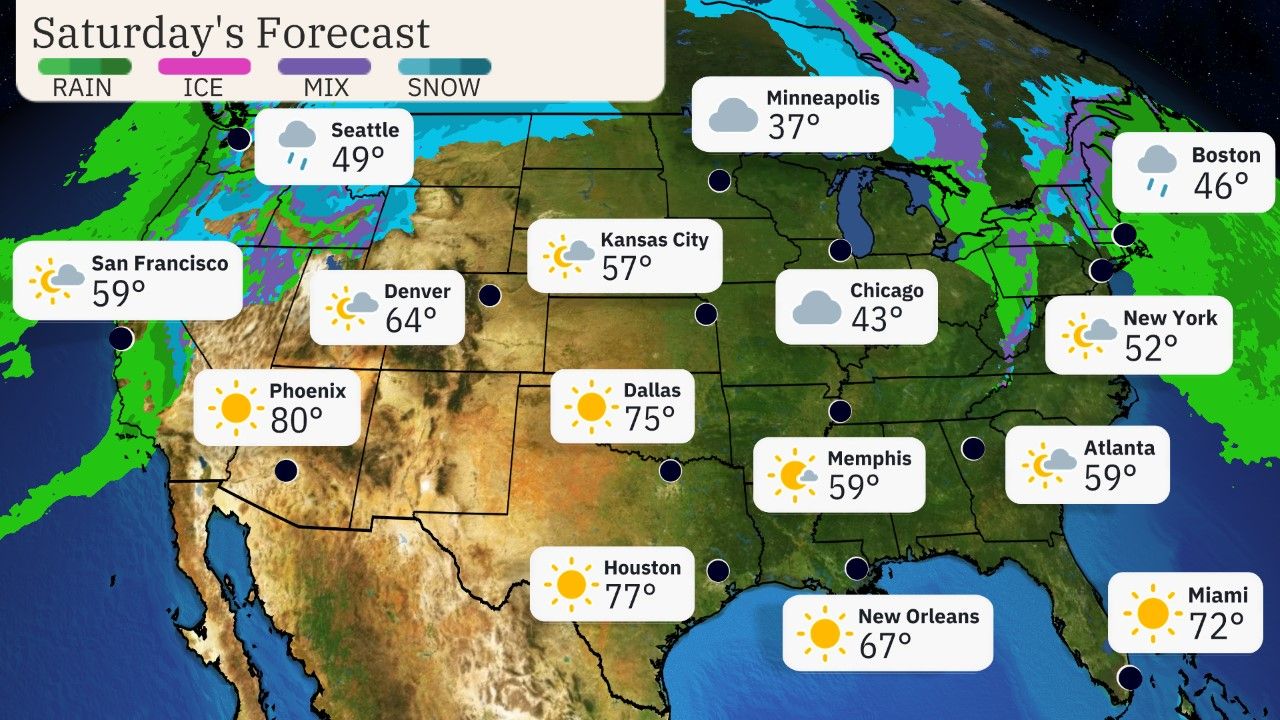

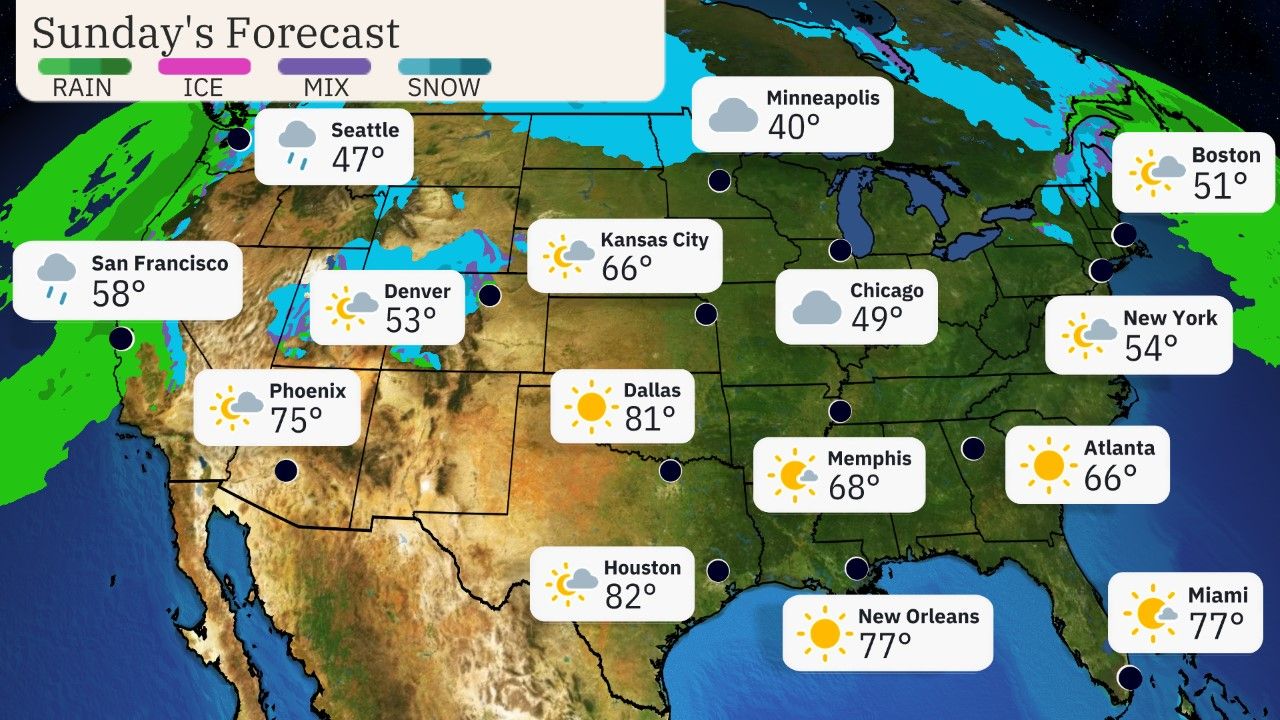

Thanksgiving Week Early Look
A weak cold front and jet stream disturbance might produce some nuisance rainfall in parts of the Great Lakes, South and East on Monday and Tuesday. Snowfall with that system will likely be limited to the Canadian border region.
The West will see pockets of rain and mountain snow as jet stream disturbances affect the region.
Wednesday and beyond the forecast across the country becomes highly uncertain, so it’s a bit too early to provide any details.
Check back to weather.com and The Weather Channel app for updates.


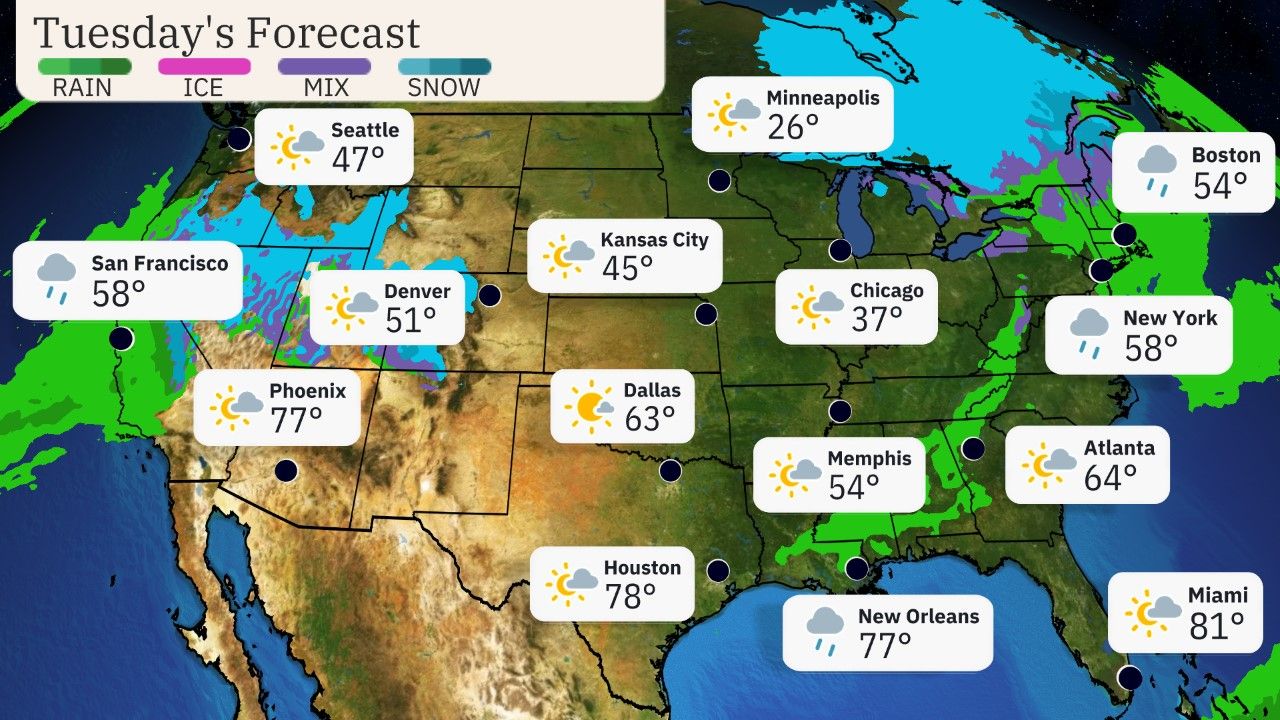

Chris Dolce has been a senior meteorologist with weather.com for over 10 years after beginning his career with The Weather Channel in the early 2000s.

